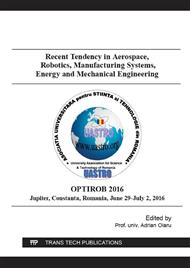[1]
R. K. Raier, H. J. Watson and B. Prince, Management Information Systems, third ed., Wiley, (2015).
Google Scholar
[2]
Information Systems Audit and Control Association, http: /www. isaca. org.
Google Scholar
[3]
R.E. Cascarino, Auditor's Guide to IT Auditing, second ed., Wiley, (2012).
Google Scholar
[4]
B. Beizer, Software Testing Techniques, second ed., New York: Van Nostrand Reinold Co., (1990).
Google Scholar
[5]
M.S. Neicu, G. Savii, M.C. Benea, Simulated company as validation environment for the design methods and algorithms of informatics systems meant for the business environment, Proceedings of the 15th WSEAS International Conference on Systems, 2011, pp.180-184.
Google Scholar
[6]
H.L. Cardoso, E. Oliveira, Virtual Enterprise Normative Framework within Electronic Institutions, Faculty of Engineering, University of Porto, (2004).
Google Scholar
[7]
T. Tolio, M. Sacco, W. Terkaj and M. Urgo, Virtual Factory: An Integrated Framework for Manufacturing Systems Design and Analysis, Procedia CIRP, 7 (2013) 25-30.
DOI: 10.1016/j.procir.2013.05.005
Google Scholar
[8]
S. Jain, N. F. Chong, K. Maung and M. Luo, Virtual factory: an integrated approach to manufacturing systems modeling, International Journal of Operations & Production Management, 21 (2001) 594-608.
DOI: 10.1108/01443570110390354
Google Scholar
[9]
S. A. Bernard, An Introduction to Enterprise Architecture, third ed., AuthorHouse, (2012).
Google Scholar
[10]
D. J. S. Ferreira, Virtual Enterprises Online Buyer Behaviour, Journal of Mathematics and Technology, 1 (2010) 147-153.
Google Scholar
[11]
Federal Enterprise Architecture Program Management Office, FEA Practice Guidance, (2007).
Google Scholar
[12]
Microsoft Company, Enterprise Architecture, https: /msdn. microsoft. com/architects-overview-msdn.
Google Scholar
[13]
E. Monk, and B. Wagner, Concepts in Enterprise Resource Planning, fourth ed., Boston: Course Technology Cengage Learning, (2013).
Google Scholar
[14]
Organisation for Economic Co-operation and Development, Management Training in SMEs, (2002).
Google Scholar
[15]
A. Horton and J. Hughes, Enterprise Management, Elsevier, (2009).
Google Scholar
[16]
S. -M. Yang, B. Ahn, K. -K. Seo, Development of a prototype customer-oriented virtual factory system, The International Journal of Advanced Manufacturing Technology, 28 (2006) 1031-1037.
DOI: 10.1007/s00170-004-2450-7
Google Scholar


